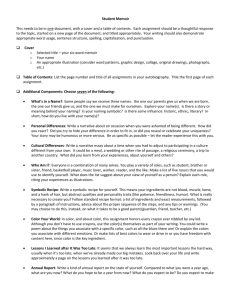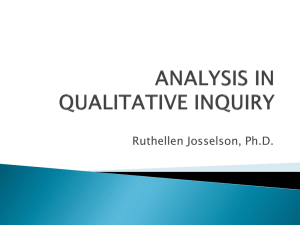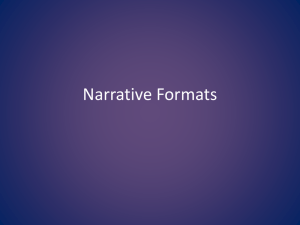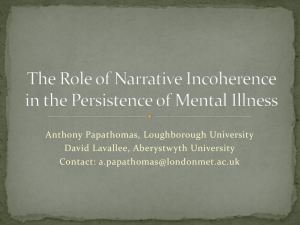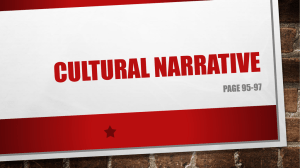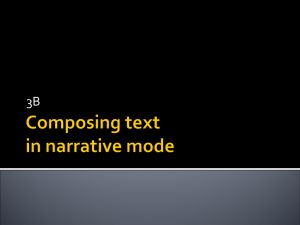Narrative based medicine
advertisement
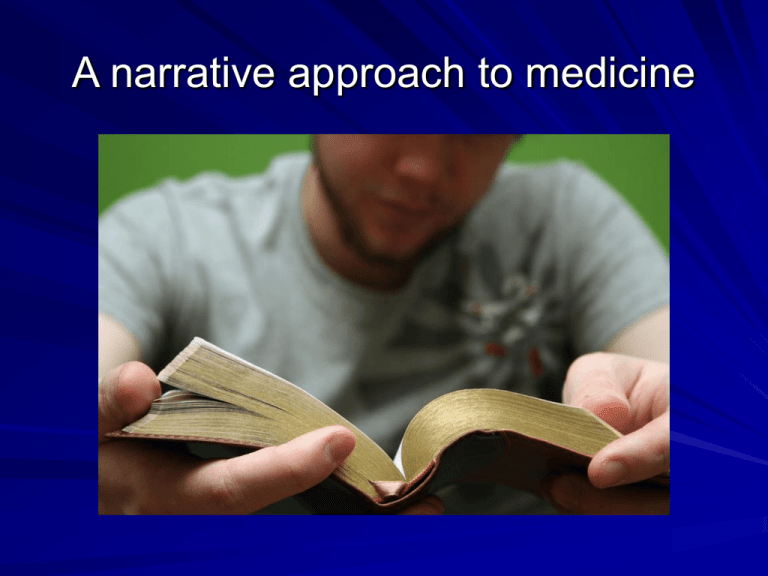
A narrative approach to medicine Aims and objectives What is narrative based medicine? To consider narrative as a way of learning and understanding To try some narrative of our own To consider if and how you might use this in your future learning and practice Types of narrative The patient’s story Narrative provides meaning, context, and perspective for the patient’s predicament Doctor’s narrative – Exploration of own feelings and reactions Anecdotes & fictional literature – “Anecdotes and fiction are a window onto the world” Why use narrative? Understand a patient’s experience Encourages empathy and promotes understanding between the clinician and patient Encourages a holistic approach Facilitates reflective practice Enhances listening and interpretive skills Gives meaning to the patient’s experience and so can be therapeutic Memorable Medical uses Facilitating the traditional medical history Counselling Psychotherapy Education Working in pairs What are some of the challenges to a narrative based approach? Challenges to a narrative based approach Video consultation skills teaching now primarily based on COT competencies A target based approach to WPBA Time constraints of the 10 minute consultation Fear of litigation and need to meet the doctors agenda – red flags etc QOF, LQOF Look closer Time for you to have a go! Close your eyes and spend 2 minutes reflection on an embarrassing, funny or memorable event Working in pairs take it in turns to share you experience Write your own story Over the next 10 minutes write a description of an experience that has changed your practice – A memorable patient – A memorable consultation – A memorable meeting or lifetime event – Your experience as a patient After coffee – small group work Person A - Tells their story Person B - Listens without interrupting, then discusses it with person A to explore the story – its context, meaning and implications for the individual. Person C - Observes the process, this is a listening exercise, watching and listening to how they story unfolds; Language, emotion, details, body language etc Final 5 minutes discuss the process between all of you before changing places Trio working Person A - Tells their story Person B - Listens without interrupting, then discusses it with person A to explore the story – its context, meaning and implications for the individual. Person C - Observes the process, this is a listening exercise, watching and listening to how they story unfolds; Language, emotion, details, body language etc Final 5 minutes discuss the process between all of you before changing places Recommended reading Ruth Picardie “Before I say goodbye: Recollections and observations from one woman’s final year” John Diamond “because cowards get cancer too” Jean-Dominique Bauby “The diving bell and the butterfly” Narrative based medicine BMJ 1999 – a series of five articles



